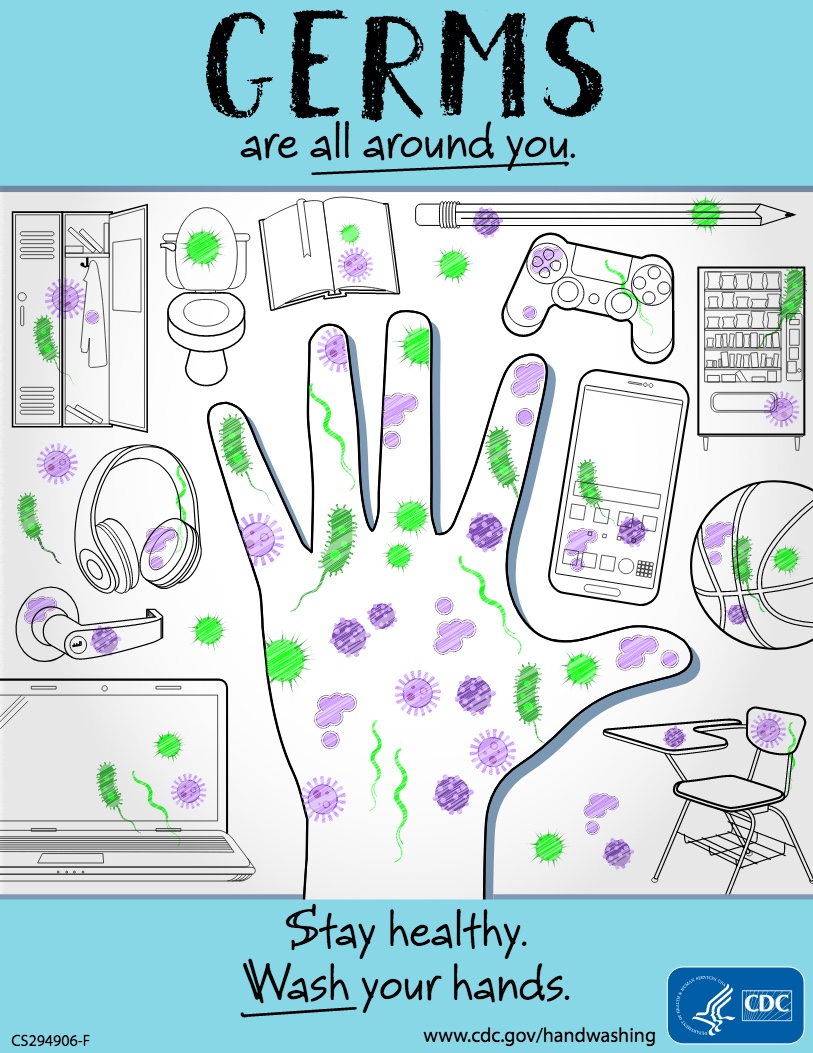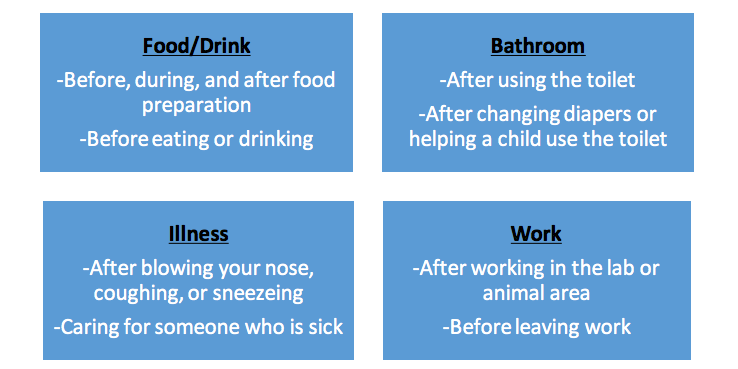Good handwashing technique is important to prevent the spread of germs. Think about everything that you touch from the moment you wake up, come to work, and go home.
Your hands may have come into contact with germs doing your daily activities.
If you conduct research activities:
• Wash hands after entering and before exiting the laboratory [scrub for 20 seconds]
• Prior to and immediately after handling microorganisms
• Immediately after removal of gloves in the lab
Cleaning hands with soap and water is the preferred method to prevent the spread of germs. When soap and water are unavailable, alcohol-based sanitizers can also be used. Alcohol sanitizers must contain at least 60% alcohol to be effective. Yet, hand sanitizers are not a substitute for handwashing.
The CDC has multiple resources to teach us when (Figure 1) and how (Figure 2) to wash our hands. Do you need a demonstration on handwashing? Head over to the CDC website for this video:
https://youtu.be/i14_MwmdV6g
Handwashing Education:
• Reduces the number of people who get sick with diarrhea by 23-40% 1, 2, 3
• Reduces diarrheal illness in people with weakened immune systems by 58% 4
• Reduces respiratory illnesses, like colds, in the general population by 16-21% 5, 6
• Reduces absenteeism due to gastrointestinal illness in schoolchildren by 29-57% 7
Figure 1 – CDC Guidelines for when to handwash
Figure 2 – CDC Guidelines for how to handwash



